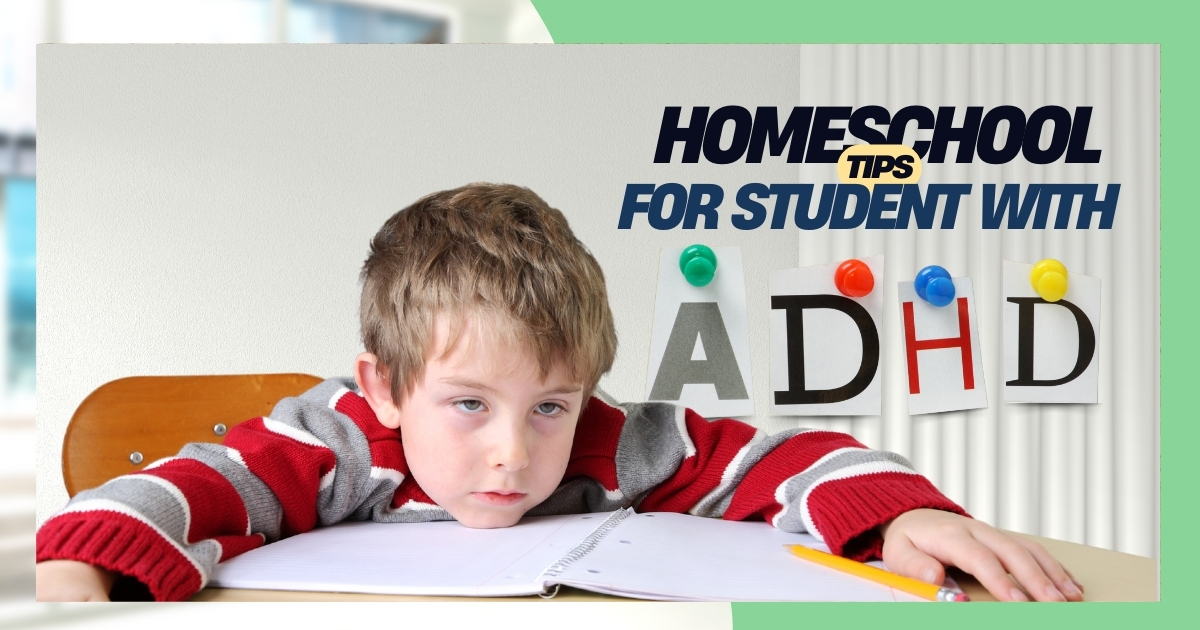Homeschooling is an increasingly popular alternative to traditional education, offering flexibility and personalized learning experiences. For parents of children with ADHD, homeschooling can be particularly beneficial, allowing for tailored teaching strategies that accommodate the unique needs of their children.
In this blog post, we will explore effective ADHD homeschooling strategies and provide practical tips for homeschooling ADHD students, ensuring a more productive and enjoyable learning environment. We will also highlight essential homeschooling resources for ADHD learners, helping parents build a comprehensive toolkit to support their children’s educational journey.
Creating A Structured Learning Environment
ADHD, or Attention Deficit Hyperactivity Disorder, is a neurodevelopmental disorder affecting both children and adults. It is marked by inattention, hyperactivity, and impulsivity, which can make traditional classrooms challenging. Students with ADHD often struggle to focus and follow instructions, leading to frustration and disengagement.
Research shows that students with ADHD often have difficulties with executive functioning skills like organizing, planning, and managing time. This can make completing assignments and staying on track harder. Homeschooling allows parents to address these challenges with tailored strategies to help their children succeed academically.
Homeschooling provides the flexibility to create a learning environment that suits a child’s unique needs. By using effective ADHD strategies, parents can support their child’s learning style, improving focus, motivation, and overall educational experiences.
A key part of homeschooling students with ADHD is establishing structure. Consistency and routine are crucial, helping students feel secure and reducing anxiety. A daily schedule with set times for lessons, breaks, and activities can help students manage time and create a stable rhythm. Regular breaks throughout the day are also essential, as they help students recharge and refocus.
Additionally, creating a dedicated, distraction-free learning space is important. A quiet, organized area allows for better focus. Tools like color-coded calendars or checklists can help students stay organized, track progress, and develop independence and self-management skills.
Implementing Engaging Teaching Strategies
Engaging teaching strategies are crucial for capturing the attention and interest of students with ADHD. By incorporating a variety of teaching methods and materials, parents can create a dynamic and stimulating learning environment that caters to their child’s unique needs. Effective tips for homeschooling ADHD students often involve using multisensory approaches that engage multiple senses, such as sight, sound, and touch. For example, incorporating hands-on activities and interactive lessons can help students with ADHD stay engaged and retain information more effectively. Use educational games, puzzles, and art projects to reinforce key concepts and make learning enjoyable.
Additionally, consider incorporating technology into your lessons, such as educational apps or online resources, to provide variety and maintain your child’s interest. Another effective strategy is to break down complex tasks into smaller, manageable steps. This can help students with ADHD focus on one aspect of the task at a time, reducing feelings of overwhelm and frustration. Providing clear instructions and using visual aids, such as diagrams or flowcharts, can also enhance comprehension and support your child’s learning process.
Key Strategies for Homeschooling ADHD Students:
- Use Multisensory Approaches: Incorporate sight, sound, and touch through hands-on activities, interactive lessons, games, puzzles, and art projects.
- Leverage Technology: Include educational apps and online resources to add variety and maintain engagement.
- Break Down Tasks: Simplify complex tasks into smaller, manageable steps to reduce overwhelm and improve focus.
- Provide Clear Instructions: Use visual aids like diagrams or flowcharts to enhance understanding.
- Teach Time Management: Use timers or visual schedules to help manage tasks and transitions between activities.
- Celebrate Achievements: Encourage goal-setting and celebrate accomplishments to foster motivation and confidence.
- Incorporate Self-Regulation Techniques: Teach stress management strategies like deep breathing or mindfulness exercises.
Self-regulation and time management are essential skills for students with ADHD, as they help them stay focused and complete tasks efficiently. By teaching your child strategies for managing their time and emotions, you can empower them to take control of their learning and develop greater independence.
- One effective approach is to use timers or visual schedules to help your child manage their time during lessons and activities. This can provide a clear sense of how long tasks will take and when transitions between activities will occur.

Encourage your child to set goals for each session and celebrate their achievements, fostering a sense of accomplishment and motivation. Teaching self-regulation techniques, such as deep breathing exercises or mindfulness practices, can also help your child manage stress and maintain focus during challenging tasks. These strategies can be integrated into your daily routine and adapted to suit your child’s preferences and needs.
Cultivating a positive learning mindset is essential for students with ADHD, as it encourages them to approach challenges with resilience and confidence. By fostering a growth mindset, parents can help their children develop a love for learning and a willingness to persevere through difficulties.
Encourage your child to view mistakes and setbacks as opportunities for growth and learning rather than failures. Praise their efforts and progress, emphasizing the importance of persistence and determination.
By celebrating their achievements and providing constructive feedback, you can help your child build self-esteem and motivation. Incorporating positive affirmations and goal-setting exercises into your daily routine can also promote a positive learning mindset. Encourage your child to set achievable goals and reflect on their successes, reinforcing their belief in their abilities and potential.
One of the key benefits of homeschooling is the ability to adapt the curriculum to meet your child’s unique needs and interests. By tailoring the curriculum to align with your child’s strengths and preferences, you can create a more engaging and effective learning experience.
Customize the Curriculum for Your Child:
- Integrate Interests and Hobbies: Use your child’s passions as a foundation for exploring new concepts and skills.
- Be Flexible: Adjust teaching methods and materials based on progress and needs.
- Regularly Assess and Modify: Evaluate learning outcomes and make changes to ensure continuous success.
By adopting these strategies, you can create an enriching and supportive environment that helps your child thrive academically and personally.
Building A Supportive Learning Community & Utilizing Homeschooling Resources For ADHD Learners
Creating a supportive learning community is an essential part of homeschooling for students with ADHD. By connecting with other homeschooling families and educational professionals, parents can access valuable resources and networks to enhance their child’s learning experience. Local homeschooling groups or online forums offer opportunities to share ideas, strategies, and resources with other parents navigating similar challenges. These communities provide encouragement and guidance, helping parents feel more confident in their journey.
Additionally, seeking support from educational professionals, such as tutors or therapists, can be incredibly helpful. These experts provide tailored strategies and interventions to address specific needs, helping children overcome challenges and achieve academic success.
Benefits of a Supportive Homeschooling Community:
- Access to shared resources, ideas, and strategies.
- Encouragement from parents with similar experiences.
- Opportunities to connect with educational professionals like tutors or therapists.
- Emotional and practical support to boost confidence in homeschooling.
Accessing a variety of homeschooling resources for ADHD learners can also greatly enhance your child’s educational experience. These resources provide tools and materials that support learning and help ADHD students thrive.
Top Resources for ADHD Homeschooling:
- Educational websites, apps, and online courses: Offer activities and information customized to different learning styles.
- Books and workbooks for ADHD learners: Include engaging exercises and concepts to reinforce key skills.
- Local or virtual support groups: Provide connections with other parents and advice for navigating homeschooling challenges.
- Specialized tutors or therapists: Offer targeted interventions tailored to your child’s unique needs.
Homeschooling creates an opportunity for personalized education, allowing parents to implement effective strategies and build a supportive learning environment. By understanding ADHD challenges and using tailored teaching methods, parents can help children succeed academically and develop essential life skills.
Tips for Supporting ADHD Learners at Home:
- Foster a positive learning mindset and celebrate small achievements.
- Be flexible and patient when adapting your approach to your child’s needs.
- Incorporate hands-on, engaging activities to maintain focus and interest.
- Provide structure and clear routines to help with time management.
By utilizing diverse resources, fostering a positive outlook, and connecting with others, parents can empower their children to thrive and reach their full potential. Remember, every child is unique, and adapting your approach is key. For additional guidance, consider joining support groups or consulting educational professionals who can share valuable insights.
By working together and sharing experiences, parents can create a vibrant homeschooling community that supports the growth and success of all students.





